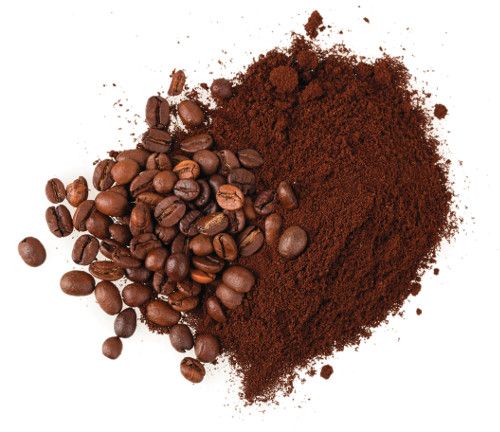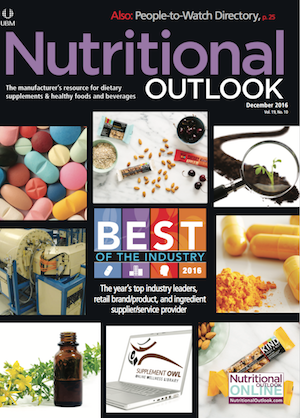New Ways to Repurpose Ingredient, Food Waste
Scientists tell you how to turn food waste into new ingredients.
Photo © Shutterstock.com/Dmitrij Skorobogatov

Food wastage is a critical concern. An estimated one-third of all food produced today is either lost in the supply chain or wasted outright,1 and the ramifications for the planet are cumulatively destructive. While consumers’ over-purchasing habits are partly to blame, growers and manufacturers share an equal burden. Poor transport and storage of food items contribute to food wastage. Perhaps an even more glaring issue is the amount of edible and otherwise useful plant material that gets thrown out by growers and processors every day.
Diverting undesirable plant parts to compost can be a positive business practice. Other approaches, however, may let firms turn a profit from plant and other waste. Thanks to the leadership of responsible businesses, as well as research breakthroughs, we’re finding new human uses for these plant parts at an increasing rate.
Grape
For all of the wine and grape juice in production, there’s a whole lot of grape seed and pomace potentially going to waste. To redirect these materials to commerce, dietary supplement ingredient companies turn them into grape seed extracts and grape skin extracts. The sizable market for grape seed and grape skin extracts is well established. The ingredient suppliers that participate in this space include companies such as Polyphenolics Inc. (Madera, CA) with its water-extracted grape products, and Draco Natural Products (San Jose, CA), a company that supplies numerous seed- and pomace-based plant extracts (not just from grapes) to domestic and international customers.
Independent researchers, as well as companies with vested interest in grape extracts, have published positive studies on human consumption of these extracts for uses such as helping to lower blood pressure. Their research continues, with recent findings supporting the use of grape pomace in brewed coffee drinks as a potential free radical scavenger,2 as well as a characterization of the bioactive compounds in wine grape skins, including, but not limited to, phenolic compounds, anthocyanins, flavonoids, and polyunsaturated fatty acids.3
Avocado
Fresh avocado can fetch a high price, but what of the hard pit left over from every fruit? Seeing a potential missed opportunity-in the guacamole industry, perhaps?-interested parties are giving avocado seeds a closer look.
Earlier this year, researchers in Mexico proposed that avocado seeds may contain useful starch. After extracting the starch and comparing it to cornstarch, the researchers determined that avocado seed starch has potential for thickening and gelling of foodstuffs. The same qualities may one day even make this starch useful for pharmaceutical delivery (into the body) and as a component of food packaging.4
Avocado seeds have additional potential human uses. A research team years ago discovered the seeds’ potential (when crushed) as an orange food colorant.5 Ingredients firm Ecuadorian Rainforest LLC (Belleville, NJ), which sells an avocado seed powder to food and dietary supplement manufacturers (alongside other seed powders, such as pumpkin), says avocado seeds are particularly rich in antioxidants.6
Chocolate and Coffee
During production of chocolate and coffee for the masses, the unused pods and grounds of these luxury commodities are often repurposed for compost or garden mulch, or they are simply discarded (which can spread cocoa crop disease). But there are ways of redirecting discards to benefit human health.
In the case of cocoa, extracts sourced from cocoa pods recently showed promise as an experimental antiwrinkle gel for human skin. Within three weeks, gel users experienced reduced skin wrinkles and increased skin hydration.7
Available in more plentiful supply, coffee grounds and other byproducts seem to have several novel uses that researchers are now learning about. Coffee grounds can be added to baked goods as a source of insoluble fiber, essential amino acids, and low-glycemic sugars. These properties, along with a resistance to thermal food processing, made coffee grounds seem like a sensible addition to biscuits in a recent study.8 In addition, silver skin-a thin skin layer left on coffee beans after they are hulled-is showing potential as a useful additive for skin-hydration creams.9-10
Tomato
For many years now, tomatoes have been used not just as whole and mechanically processed cooking ingredients, but also for the extraction of their pigments and nutritional compounds such as beta-carotene and lycopene. Lycored Corp. (Orange, NJ) is at the forefront of this tomato science, as the company has, with its various colorants and other sophisticated tomato ingredients, already carved out a nice space in the dietary supplement, food, and beverage industries.
Ongoing research indicates that the reuse of tomato byproducts has continuous potential beyond even today’s more advanced applications. Most recently, dry tomato waste was successfully added to wheat flour at 6%.11 At this low level of replacement, tomato waste yielded increased moisture and crumb elasticity in bread.
Pineapple
Lots of fibrous plant materials can, once ingested, impart a prebiotic effect on their consumers. This appears to be the case with pineapple waste. Thanks to pineapple waste’s prebiotic properties, it increased the presence of probiotics in yogurt in a recent study.12
Reporting in the Journal of Food Science and Technology, Australian researchers say that mixing a fine powder of pineapple peel and pomace into yogurt resulted in yogurt with higher amounts of Lactobacillus bacteria than a control yogurt had. The friendly addition didn’t just boost probiotic growth; it also increased antioxidant activity in the product, they said.
Omega-3s
In the giant market for omega-3 oils, we’ve already witnessed a growing diversity of resources (marine species) being used. Aside from popular anchovy and cod, other fish species are processed into oils, and so are numerous crustacean species.
Although some marine animals are caught and harvested primarily to be used as oil, shrimp is an exception. Shrimp is primarily sold for its meat, but shrimp’s undesirable parts that are removed prior to sale can be of use for their oil. A new study on an extract of shrimp waste found that it contained ample amounts of astaxanthin and fatty acids, as well as smaller amounts of vitamin E and cholesterol.13 The ingredient proved shelf stable for up to 120 days, so it may have significant potential as a food or dietary supplement ingredient, used for nutrition and/or color.
Animal Feed
Reusing food byproducts as livestock feed is an old tradition, but it’s one that still makes sense today. Take pickled radish, which conventionally involves a lot of waste. According to a team of researchers in South Korea, 30% of the radish plant is discarded in the production of pickled radish, but this waste product can be reused in livestock feed.14 Because radish waste is especially high in soluble fiber, ruminants such as cattle can use it for energy throughout the day. If refrigerated, radish waste may keep for up to 21 days, but its high amount of sodium means it should only be used as a component of ruminant livestock feed-not as the primary ingredient.
Exotic Commodities
Since many commercial food ingredients travel significant distances before reaching consumers, it’s good business to make sure that all parts of these plants are used. Fortunately, the opportunities are plentiful, regardless of the plant. Jabuticaba (Plinia cauliflora) is a specialty Brazilian fruit grown for its juice and flesh. Jabuticaba’s pomace was just revealed to have significant nutritional contents, including tocopherols, polyunsaturated fatty acids, tannins, and anthocyanins.15
In another example, palm fruits (Borassus aethiopum Mart) are harvested for oil in millions of tons each year, yet a new study found that the leftover fruit contains lots of cheap and usable pectin, making palm fruit waste “an inexpensive raw material to extract pectin in [an] environmentally friendly and economical way.”16
More to Come
As food waste products continue to prove their uses, ingredient suppliers and product manufacturers alike can increase their profits by embracing these materials. Hopefully, one or more of these examples is a fit for your company, or will inspire new ways in which you can tackle your particular waste streams.
Also read:
Repurposing Ingredient By-product and Giving Ingredients a Second Life
Bioplastic Beverage Packaging Made from Juice Wastewater?
Is Compostable Packaging the Next Step in Sustainability?
References:
- “Food Loss and Food Waste,” Food and Agriculture Organization of the United Nations, www.fao.org/food-loss-and-food-waste. Accessed November 8, 2016.
- Nguyen T et al., “Consumer acceptance of a polyphenolic coffee beverage,” Journal of Food Science. Published online October 5, 2016.
- Ribeiro LF et al., “Profile of bioactive compounds from grape pomace (Vitis vinifera and Vitis labrusca) by spectrophotometric, chromatographic, and spectral analyses,” Journal of Chromatography B, vol. 1007 (December 15, 2015): 72–80
- Chel-Guerrero L et al., “Some physicochemical and rheological properties of starch isolated from avocado seeds,” International Journal of Biological Macromolecules, vol. 86 (May 2016): 302–308
- Dabas D et al., “A colored avocado seed extract as a potential natural colorant,” Journal of Food Science, vol. 76, no. 9 (November–December 2011): C1335–1341
- Crane M, “Repurposing Ingredient Byproduct and Giving Ingredients a Second Life,” Nutritional Outlook, vol. 18, no. 10 (December 2015): 28-33
- Abdul Karim A et al., “Efficacy of cocoa pod extract as anti-wrinkle gel on human skin surface,” Journal of Cosmetic Dermatology, vol. 15, no. 3 (September 2016): 283–295
- Martinez-Saez N et al., “Use of spent coffee grounds as food ingredient in bakery products,” Food Chemistry, vol. 216 (February 1, 2017): 114–122
- Rodrigues F et al., “Coffee silver skin: A possible valuable cosmetic ingredient,” Pharmaceutical Biology. Published online December 4, 2014.
- Rodrigues F et al., “Exploring the antioxidant potential of two food by-products into a topical cream: stability, in vitro, and in vivo evaluation,” Drug Development and Industrial Pharmacy, vol. 42, no. 6 (2016): 880–889
- Nour V et al., “Bread enriched in lycopene and other bioactive compounds by addition of dry tomato waste,” Journal of Food Science and Technology, vol. 52, no. 12 (December 2015): 8260–8267
- Sah BN et al., “Effect of pineapple waste powder on probiotic growth, antioxidant and anti-mutagenic activities in yogurt,” Journal of Food Science and Technology, vol. 53, no. 3 (March 2016): 1698–1708
- Gómez-Estaca J et al., “Characterization and storage stability of astaxanthin esters, fatty acid profile, and α-tocopherol of lipid extract from shrimp (L. vannamei) waste with potential applications as food ingredient,” Food Chemistry, vol. 216 (February 1, 2017): 37–44
- Jeon S et al., “Evaluation of feed value of a by-product of pickled radish for ruminants: analyses of nutrient composition, storage stability, and in vitro ruminal fermentation,” Journal of Animal Science and Technology, vol. 58 (September 16, 2016): 34
- Morales P et al., “Non-fermented and fermented jabuticaba (Myrciaria cauliflora L.) pomaces as valuable sources of functional ingredients,” Food Chemistry, vol. 208 (October 1, 2016): 220–227
- Assoi S et al., “Palmyra palm (Borassus aethiopum Mart) fruits: novel raw materials for the pectin industry,” Journal of the Science of Food and Agriculture. Published online August 29, 2016.

Prinova acquires Aplinova to further increase its footprint in Latin America
April 7th 2025Prinova has recently announced the acquisition of Brazilian ingredients distributor Aplinova, which is a provider of specialty ingredients for a range of market segments that include food, beverage, supplements, and personal care.






















